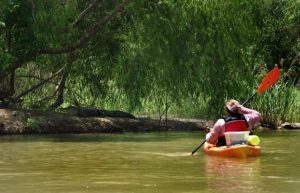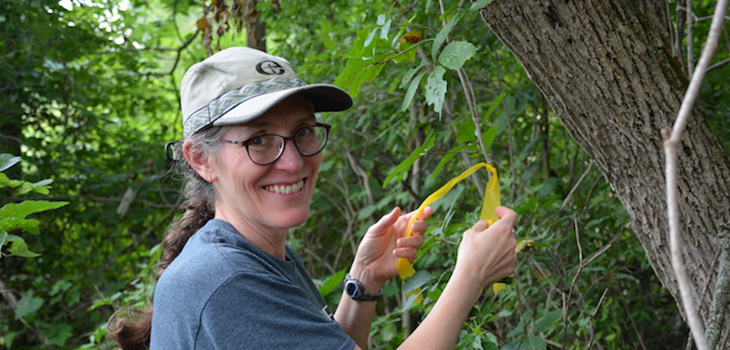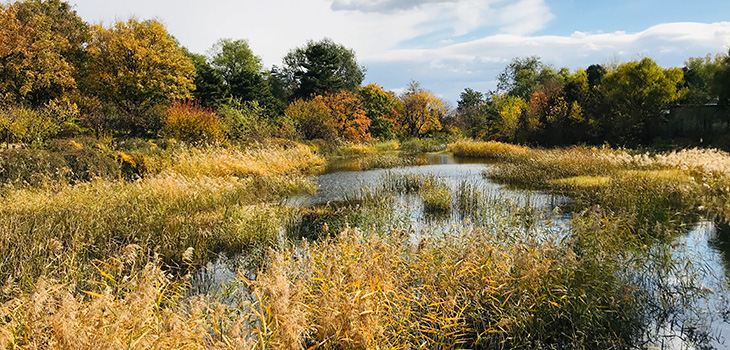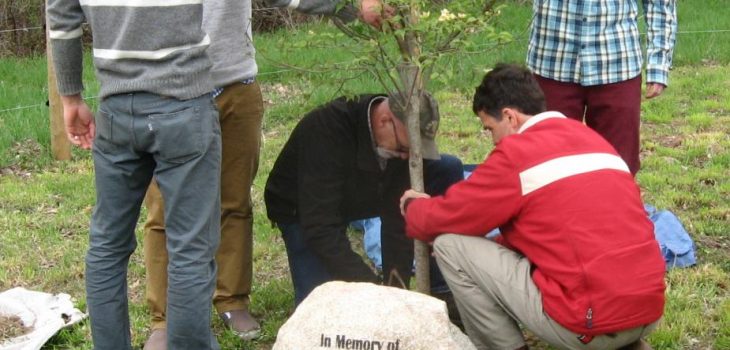 Are there jobs for people whose mission is “to inspire people to learn about and love the land through use of art?” Aly Munger, a 2017 graduate of Merry Lea’s master’s in environmental education program, found one at Artist Boat, Galveston, Texas. Aly’s title is “eco-art educator.”
Are there jobs for people whose mission is “to inspire people to learn about and love the land through use of art?” Aly Munger, a 2017 graduate of Merry Lea’s master’s in environmental education program, found one at Artist Boat, Galveston, Texas. Aly’s title is “eco-art educator.”
Aly came to Merry Lea with a bachelor’s degree in art. Her hope was to integrate this background with her love of beautiful landscapes. While at Merry Lea, she focused her research project on ephemeral art and created and taught curriculum on the topic.
Following graduation from Goshen College with a master’s in environmental education, Aly moved directly into her position at Artist Boat. Her breadth of experience made her attractive to the organization, since her colleagues tend to have either science or art background but not both.
Working at Artist Boat
Aly works on a 660-acre coastal heritage preserve that is in transition from ranchland to coastal prairie. It was purchased following Hurricane Ike, which ravaged the area, bringing land values down. Aly teaches about coastal margins, marine ecosystems, erosion control, and the role wetlands play in purifying water and flood control.
When Hurricane Harvey struck in 2017, the preserve weathered it well, thanks to the roots of the salt marsh grass knitting the coastline together. Aly reports that the hard part came when she needed to teach the importance of wetlands to children from Houston who had lost their homes to Harvey.
As an eco-art educator, Aly employs art forms that are inherently nature-based to teach about the natural world. One of the programs she teaches used Gyotaku, a Japanese art form that grew out of fishermen’s need to document their catches. To create a Gyotaku print, dampened paper is applied to a fish that has been covered with ink. This creates a delicate and detailed print. Aly uses Gyotaku to teach about fish anatomy, the differences between fish species and their place in the ecosystem.
Another approach involves using drawing as an assessment tool. Before taking children on a kayak tour of a coastal wetland, Aly has them draw a picture of what they think a wetland looks like. After they return, the children do the same exercise. Regardless of artistic ability, children produce much more sophisticated drawings after the outdoor experience.
Marcos Stoltzfus, director of the Environmental Education Outreach team at Merry Lea coached Aly during practicum teaching experiences at Merry Lea. “One thing I’ve enjoyed in my professional career is watching other educators grow. It is abundantly clear that Aly has grown, both during her time in Texas and at Merry Lea,” he observed after meeting Aly again a year later. One area of growth no doubt includes how to safely share space with alligators!



